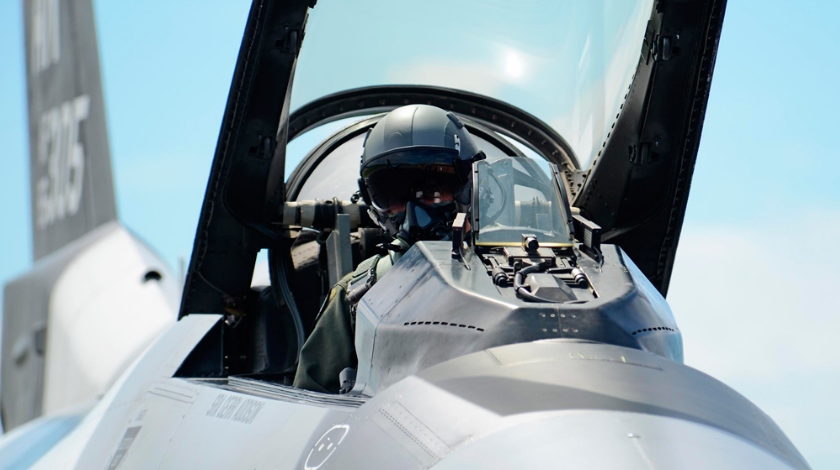The U.S. Air Force is slated to get a more than 150 percent boost of $600 million in the Pentagon’s proposed 2018 budget for operations in Europe, the sharpest increase among the services as the military seeks to intensify efforts aimed at countering Russia.
Under the European Reassurance Initiative (ERI), the U.S. Army in Europe still gets the most dollars overall, but adding more Air Force capabilities is required to establish a stronger overall fighting force, U.S. European Command said.
“As a joint force, to provide a more credible deterrent, it is important we have not only the land forces, but those other domains, that are ready to respond and ready to react … to be able to thwart aggression,” said Maj. Gen. David Allvin, EUCOM’s strategy chief.
The 2018 ERI, which still must be approved by Congress, calls for nearly $4.8 billion — $1.4 billion, or 41 percent, more than last year — to be invested in a range of operations aimed at deterring Russian aggression. The Army accounts for the bulk of those funds, $3.2 billion, largely in support of maintaining a year-round presence of a U.S. armored brigade, aviation brigade, and building up pre-positioned stocks of equipment. But the ERI request for the Air Force, while smaller, is set to jump from $388 million last year to $1 billion in 2018.
The ERI is funded out of contingency funds and is separate from the Pentagon’s $574.5 billion base budget, which is set to rise by $52 billion, or 10 percent over the previous year’s spending level. The Navy got a more modest bump in Europe, a theater traditionally dominated by Army and Air Force presence, with funding to increase of 78 percent from last year’s $86 million to $153 million.
Roughly $100 million of Air Force funding will go toward “air superiority capabilities” by deferring previously planned force reductions.
That ensures the retention of F-15C aircraft in the 493rd Fighter Squadron at RAF Lakenheath as well as support squadron operations and weapon systems to maintain combat readiness. Enhancing Air Force rotations around Europe will cost $160 million more.
Another area of focus is beefing up EUCOM’s intelligence gathering capabilities. That has been a difficult need to fill, given the high demand for surveillance assets in other theaters. EUCOM, however, is budgeted to get more.
“There is an (intelligence, surveillance and reconnaissance) thread to this,” Allvin said. “One of the main reasons is in order to be able to have the right posture early, to be able to avert crises, you have to have a better sense of what is going on.”
If the ERI is funded, EUCOM will see an influx of about $200 million to enhance a series of intelligence gathering efforts, including unmanned and manned surveillance.
The funds are spread out among the services, as well as special operations forces.
EUCOM’s past several years have focused on establishing a larger and more consistent presence of U.S. forces along NATO’s eastern flank. In overall military assets in the border regions between NATO and Russia, Moscow has allies outmanned and outgunned thanks to overall geographic advantage.
EUCOM has sought to make up for that by improving airfields in eastern Europe as well as making improvements to ports and bases used for antisubmarine operations and staging sites for the quick deployment of troops in a crisis. About $338 million will allocated to continue such efforts under the budget proposal.
Those site improvements, “help us move in and through and across Europe,” Allvin said.

